031715_YKMV_A14.pdf
March 17, 2015 • Page 14
shop online at www.missourivalleyshopper.com
March
15 - 21, 2015
Drainage Calculators Now Available
USDA Seeks Nominees
For Soybean Board
BROOKINGS — SDSU Extension recently released webbased drainage calculators for tile drainage and subirrigation
WASHINGTON — The U.S. regions, the Board adminisdesign. Contractors and farmers can access these calculators
Department of Agriculture
ters a research and promoat www.iGrowDrainage.org. The calculators are compat(USDA) is seeking nomination program authorized
ible with a variety of devices allowing for in-field use.
tions for positions on the
by the Soybean Promotion,
“For years farmers and contractors have asked our team
United Soybean Board.
Research, and Consumer
to develop calculators they could use in the field because
Vacancies for producer
Information Act. The Secreseveral calculations are needed when designing drainage
member positions will occur
tary of Agriculture selects
systems on agricultural land,” explained Chris Hay, SDSU
in Arkansas, Georgia, Illinois, appointees from producers
Extension Water Management Engineer.
Indiana, Iowa, Kentucky,
nominated by Qualified State
To meet this demand, Hay and his team took researchLouisiana, Minnesota, MisSoybean Boards.
based calculations and designed several easy-to-use
souri, North Carolina, North
Research and promotion
calculators which address common drainage design
Dakota, Nebraska, Ohio,
programs are industry-fund- calculations to provide farmers and contractors with in-field
Pennsylvania, South Dakota,
ed, were authorized by Con- data they need.
and Virginia. There are algress and date back to 1966.
“These are equations that we as engineers like to
ternate vacancies in Georgia
Since then, Congress has
play around with but aren’t always the easiest to use.
and in the Western Region.
authorized the establishment The calculators are designed to make it easy to get quick
Any soybean producer
of 22 research and promoanswers so they can get the job done right,” Hay said. The
within the United States
tion boards. They empower
PHOTOS COURTESY OF IGROW.ORG
calculations Hay references provide research-based guidance
that owns or shares the
agricultural industries by
to boost productivity and minimize downstream impacts
ownership and risk of loss of establishing a framework for on everything from drain spacing and pipe sizing, to
explained Nathan Utt, Agricultural Engineer with Ecosystem
soybeans can be considered
them to pool resources and
Services Exchange. “There is an increase in drainage
subirrigation and lift station design.
for nomination. All eligible
combine efforts to develop
installation and a growing number of people who are doing
“When tiling, the calculations need to be correct in
producers are invited to seek new markets, strengthen
the installation. Not only contractors, but farmers and other
order for the drainage system to meet the farmer’s goals
nomination by April 24, 2015. existing markets, and
landowners who are installing their own drain tile,” said
and function properly. Once you put the pipe in the ground,
A soybean producer must
conduct important research the goal is that it will last 50 to 100 years or more without
Utt who has been working with agricultural drainage since
be nominated by a Qualiand promotion activities.
2007 and as an engineering consultant in the field for three
issues,” Hay said.
fied State Soybean Board
The Agricultural Marketyears. “These calculators are helpful because they provide
Tiling is designed to drain excess moisture off fields that
and submit a completed
ing Service (AMS) provides
have reached their holding capacity. “Many soils in the Upper accurate numbers for factors like optimum drainage spacing,
application.
oversight, helping to ensure Midwest do not drain well because of glacial influence,” Hay
which is critical to system performance as well as minimizing
USDA encourages board
fiscal responsibility, program explained. “Many fields sit on top of layers of glacial till or
system cost,” Utt said.
membership that reflects
efficiency and fair treatment other restrictive layers that can limit natural drainage.”
The calculators were developed in cooperation with
the diversity of the individuof participating stakeholders.
Demand for tile drainage is up in portions of South Dakota University of Minnesota Extension. To learn more and access
als served by its industry.
For more information,
the calculators, visit www.iGrowdrainage.org.
where excess field moisture can delay or prevent planting,
Diversity includes gender,
contact James Brow, Agriculn SDSU iGROW
race, disability, length of
tural Marketing Specialist,
service, and size and type of
Research and Promotion
operation.
Division, Livestock, Poultry,
For a copy of the nominaand Seed Program, AMS,
tion form and the contact
USDA, STOP 0251, Room
Planting cover crops is a hot
we can easily express in dollars,”
of the big economic questions will
information of the Qualified
2610-S, 1400 Independence
trend but farmers who haven’t tried
Dozier adds.
help more Illinois farmers give this
State Soybean Board in your
Avenue, SW, Washington, DC
it yet have one question: “What’s it
Benefits & Costs To Measure
conservation option a try,” says Dozier.
state or region, visit: www.
20250-0251; tel. (202) 720going to cost me?” USDA’s Natural
Direct nutrient credits
According to NRCS and other research,
ams.usda.gov/SoybeanPage.
0633, e-mail James.Brow@
Resources Conservation Service
Input reductions
long-term results in renewed soil health
Composed of 70 members ams.usda.gov; or fax (202)
(NRCS) developed a simple digital tool
Yield increases & decreases
offer huge returns in crop yields, water
representing 31 states and
720-1125.
to answer that question. It’s called the
Seed & establishment costs
quality and infiltration improvements,
n United States Department of Agriculture
Cover Crop Economic Decision Support
Erosion reductions
weed and pest control and more.
Tool. It helps farmers, landowners and
Grazing opportunities
“Cover crops are a good trend and one
others make informed decisions when
Overall soil fertility levels
that can actually pay off,” Dozier adds.
M I S S O U R I VA L L E Y
considering adding cover crops to their
Water storage & infiltration
This NRCS tool, which is being
production system. And it’s free.
improvements
used nationwide, was developed by
“The tool offers a partial budget
The tool’s analysis depends on data Agricultural Economists in Missouri
analysis,” explains Ivan Dozier, Illinois
users enter. Users can run “what if”
and Illinois. Farmers can download the
NRCS State Conservationist. “It focuses scenarios if they want to evaluate a
spreadsheet and run it at http://tinyurl.
only on operational changes farmers
range of values. The tool offers results
com/ms5badt or visit the Illinois
make—actual costs and benefits
in both dollars and graphs, showing
website and find a factsheet about the
farmers see when they add in cover
short- and long-term benefits.
tool and download the tool there.
crops. We focus on benefits and costs
“Our hope is that answers to some
n Natural Resources Conservation Service
Cover Crop Cost$? There’s An App For That!
MV Shopper
CLASSIFIEDS
IN PRINT & ONLINE
To place your ad call...
605.665.5884
Growing Grapevines In The Upper Midwest
ROSHOLT (AP) — A
winery in Rosholt doubles as
a family home for a couple
who recently moved back
to South Dakota to start
their grape-growing and
winemaking business.
According to the
Watertown Public Opinion,
Jeremiah and Lisa Klein were
inspired by a news article
about growing grapevines in
the Upper Midwest to bring
With the Wind Vineyard &
Winery to fruition in the far
northeast corner of South
Dakota.
“We had been looking at
an abandoned farm property
just to live on, and my
husband wondered if the soil
there would be the right type
to grow grapevines, which
we thought would be a fun
hobby,” Lisa Klein said.
Tests of the soil done by
Jeremiah Klein, who worked
in the agriculture industry,
found it was good for grapes.
The couple purchased the
property about three years
ago and built a winery in the
same building where they
live. The wine-making facility
and tasting room are
on the first floor, while
the Kleins, including
their three children,
live on the second
floor.
They grow four
varieties of grapes:
Brianna, Frontenac,
Frontenac Gris
and King of the
North. Their stainless steel
fermentation tanks come
from Italy.
Jeremiah Klein learned
how to produce wine by
taking science courses
through South Dakota State
University and completing an
online winemaking program
through the University of
Jeanne & Travis Devine
909 Broadway, Tripp Park Plaza, Yankton, SD
1-605-665-2389
Johnson Electric, LLP
Rick Merkel • Ben Merkel
Chris Merkel
• Rural • Residential • Commercial
• Electrical & Telephone Wiring
• We Trench H20 Lines, Footing & Electric Lines
• Our Bucket Truck Reaches 80’ PLUS
• We Set Poles
FAST COURTEOUS
SERVICE
500 W. 12th St.
YANKTON
665-5686
California, Davis. Lisa Klein
said she helps with tasting
and business decisions.
So far, the couple has 900
vines on 1.5 acres just south
of Rosholt, about seven miles
east of Interstate 29. “We
have 10 acres available for
growing grapes,” Lisa Klein
told the Capital Journal.
Their entire farm is 20 acres.
Last June, the first
“commercial batch” of their
wine was available, 2013
vintage, she said. “The 2014
vintage will come later this
spring into early summer.”
The winery opened to
the public in June. Besides
raising grapes and making
wine, the family holds regular
tastings and sells the wine in
nearby stores. “They served
our wine at the inaugural ball
in Pierre in January,” Lisa
Klein said.


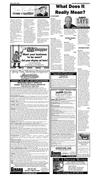
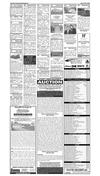

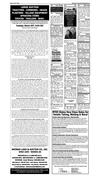
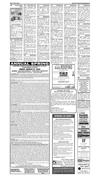



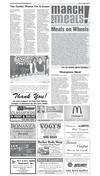
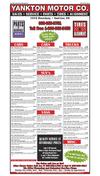

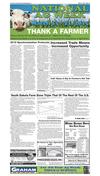


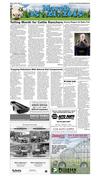
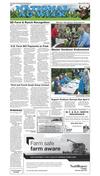
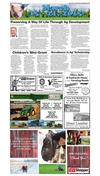

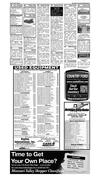

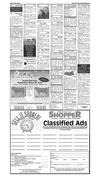


 Previous Page
Previous Page




